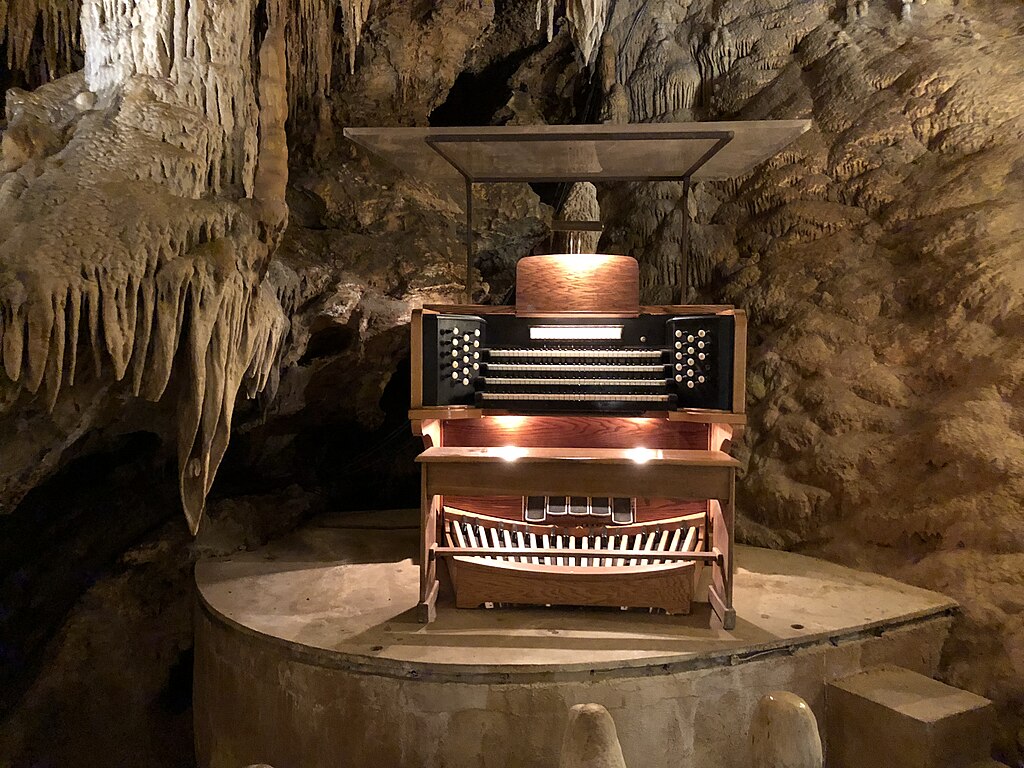
"Sta­lac­tites hang tight to the ceil­ing, and sta­lag­mites push up with might from the floor: this is a mnemon­ic device you may once have learned, but chances are you haven't had much occa­sion to remem­ber it since. Still, it would sure­ly be called to mind by a vis­it to Luray Cav­erns in the Amer­i­can state of Vir­ginia, home of the Great Sta­lacpipe Organ."
"As its name sug­gests, that attrac­tion is an organ made out of sta­lac­tites, the geo­log­i­cal for­ma­tions that grow from cave ceil­ings. Not long after the dis­cov­ery of Luray Cav­erns itself in 1878, its sta­lac­tites were found to res­onate through the under­ground space in an almost musi­cal fash­ion when struck - a prop­er­ty Leland W. Sprin­kle took to its log­i­cal con­clu­sion in the mid-nine­teen fifties."
""Dur­ing a tour of this world-famous nat­ur­al won­der, Mr. Sprin­kle watched in awe, which was still cus­tom­ary at the time, as a tour guide tapped the ancient stone for­ma­tions with a small mal­let, pro­duc­ing a musi­cal tone," says Luray Cav­erns' offi­cial site. "Mr. Sprin­kle was great­ly inspired by this demon­stra­tion and the idea for a most unique instru­ment was con­ceived.""
Stalactites and stalagmites serve as mnemonic-linked cave formations; Luray Caverns in Virginia contains the Great Stalacpipe Organ. The organ uses resonant stalactites that produce musical tones when struck; Luray Caverns' stalactites were observed to resonate soon after the caverns' discovery in 1878. Leland W. Sprinkle, inspired by a guide tapping the formations, conceived an instrument in the mid-1950s. He spent three years locating suitable stalactites, shaving them to achieve correct frequencies, and wiring them to electrically activated, keyboard-controlled mallets. Sprinkle's technical background included work as a mathematician and electronics scientist at the Pentagon.
Read at Open Culture
Unable to calculate read time
Collection
[
|
...
]